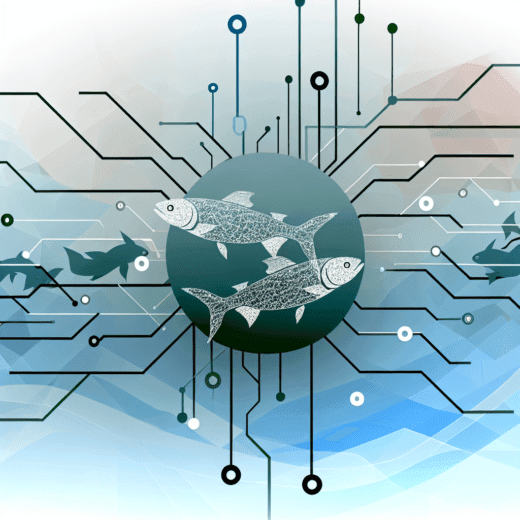Introduction: The Intersection of Aquaculture and Technology
In the pursuit of sustainable food production, aquaculture emerges as a promising sector, contributing significantly to global food security. A key element in this endeavor is the accurate analysis of fish behavior, a critical factor in optimizing farming practices and enhancing yield. This is where Fish Behavior Analysis Software comes into play. By harnessing advanced technologies like computer vision and machine learning, such software holds the potential to revolutionize the aquaculture industry. Let’s delve into this transformative innovation that not only promises market disruption but also brings with it unique challenges and opportunities ripe for exploration by startups.
Innovation Potential: Marrying Technology and Aquaculture
The burgeoning field of fish behavior analysis software illustrates a significant leap in how technology can enhance traditional farming methods. Historically, fish farming has been heavily reliant on manual observations and empirical methods for behavior analysis and farm management. These traditional practices often lack accuracy and consistency, paving the way for technology-driven solutions.
Fish Behavior Analysis Software applies sophisticated algorithms and data analytics to continuously monitor fish populations. This enables farmers to assess growth rates, identify health issues early, and optimize feeding practices. By automating the analysis process, this technology not only reduces labor costs but also minimizes feed waste, thereby promoting both economic and environmental sustainability.
Academic research corroborates the effectiveness of such technological interventions. Studies have shown that leveraging digital solutions can increase yield and reduce mortality rates significantly. Furthermore, real-world use cases, such as the implementation by companies like Envisible with Wholechain, demonstrate tangible improvements in traceability and operational efficiency within aquaculture.
Market Disruption: Reshaping the Aquaculture Industry
The introduction of fish behavior analysis software presents a formidable disruption to traditional aquaculture processes. By providing real-time insights into fish behavior, these tools enable more precise management decisions, leading to enhanced productivity and sustainability. This shift poses challenges to conventional methods while offering advantages that technology-driven practices can provide.
Market disruption is evident in how established players in aquaculture are now competing with tech-savvy startups offering innovative solutions. These startups, leveraging cutting-edge technology, are able to scale solutions tailored to diverse farming environments, from small-scale local fisheries to vast industrial aquacultures.
Case studies from successful startups show a pattern of growth fueled by innovation. For instance, Innovasea, a company at the forefront of technological integration in aquaculture, uses advanced tools to transform how farmers interact with their fish stocks, offering significant competitive advantages. Such examples highlight the growing trend of technology adoption in aquaculture, catalyzing the industry toward a digital future.
Key Challenges: Navigating Obstacles in Startup Expansion
While the potential for fish behavior analysis software is vast, startups face significant hurdles on their journey to achieving widespread adoption. One of the primary challenges is the initial cost of technology deployment and adaptation within existing aquaculture operations. Many small to medium-sized farms may be hesitant to adopt these innovations due to the perceived complexity and expense of software implementation.
Another critical obstacle is the integration of these advanced systems with the pre-existing technological infrastructure of farms. Many aquaculture operations may not possess the necessary technical capability to integrate and manage sophisticated behavioral analytics systems, necessitating comprehensive support and training—which can be resource-intensive for startups to provide.
Furthermore, regulatory hurdles and compliance issues can pose significant barriers for startups operating in this sphere. Each region may have specific legal requirements concerning data usage, environmental impact, and animal welfare, which the startups must navigate to operate legally and ethically.
Unique Opportunities: Unlocking Potential in a Nascent Market
Despite these challenges, the opportunities in the sector are plentiful. Startups that successfully create robust, user-friendly, and cost-effective solutions stand to capture significant market share. These ventures offer the promise of not just improving aquaculture efficiency but also extending these solutions to other sectors such as fisheries management, conservation efforts, and scientific research, broadening their market potential.
Strategic partnerships represent a unique opportunity for startups. By collaborating with established aquaculture companies, research institutions, and technology firms, startups can leverage existing infrastructure and expertise, accelerating their path to innovation and market penetration.
In addition, exploration of predictive analytics and big data could further enhance the offerings of fish behavior analysis software, providing companies with the opportunity to anticipate future trends and provide preventive solutions, reducing risks and maximizing growth potential.
Fundraising Strategies: Building Financial Foundations
For startups in the fish behavior analysis niche, securing funds is crucial for scaling and sustaining their technological innovations. Traditionally, fundraising for such startups involves seeking investment from venture capitalists who have a keen interest in technologically advanced and sustainable solutions. Connecting with investors who are focused on sustainability and technological innovation can provide not only financial backing but also invaluable mentorship and guidance.
Crowdfunding platforms offer another viable alternative, allowing startups to generate initial capital while showcasing their solution to environmentally conscious consumers and niche market segments. This can build a community around the conversation of sustainable aquaculture practices, giving startups a platform to engage direct feedback from potential users.
Strategic alliances with larger enterprises involved in aquaculture could also present opportunities for venture capital infusion or long-term partnership agreements. Such partnerships often bring additional resources, including marketing and distribution networks, that can be instrumental for scaling operations.
Scaling: Strategies for Growth and Expansion
Scaling is particularly crucial for startups in the fish behavior analysis software industry due to the rapidly growing demand for sustainable aquaculture solutions. To achieve sustainable scaling, startups should focus on developing scalable technology infrastructures that can handle increasing loads and complexities without essential overhauls.
Localization strategies preemptively addressing varying regulatory and market requirements in different regions can ease entry into new markets. Additionally, catering to different scales of operations (from small fisheries to large industrial plants) with customizable solutions ensures broader market accessibility and adoption.
Developing a strong brand identity focused on environmental impacts and sustainability can further enhance growth prospects. As consumers become increasingly conscious of sustainable practices, aligning the brand with environmental benefits can offer competitive advantages, attracting customers who prioritize sustainability.
Achieving Product-Market Fit: Aligning Solutions with Market Needs
Achieving product-market fit in the fish behavior analysis software industry requires a deep understanding of the specific needs and challenges faced by aquaculture operations. Conducting thorough market research to gather insights into customer needs and pain points is crucial in shaping software capabilities and features.
Customer feedback loops can provide critical insights into refining the product. Establishing beta testing programs or early adopter communities can help startups receive ongoing feedback and pivot swiftly to enhance the user experience and maximize product efficacy.
Iterative development, where startups frequently test and refine their product based on real-world usage, can be pivotal in achieving product-market fit. This approach allows startups to remain agile, adapting promptly to any emerging needs or challenges that may arise in the industry.
Customer Acquisition: Strategies for Building a Loyal User Base
Acquiring customers is a multi-faceted challenge that requires startups to deploy various strategies effectively. Leveraging data-driven marketing techniques can provide insight into market segments most likely to benefit from the solution. Digital marketing campaigns emphasizing the unique value propositions and environmental benefits of the software can attract a broader audience.
Building a strong distribution network can facilitate reaching new markets. Startups could partner with aquaculture equipment retailers or distributors who have established market reach and credibility. Such partnerships can streamline the process of familiarizing potential users with their solutions.
Offering introductory training sessions or workshops can serve as a powerful tool for customer acquisition, allowing potential clients to understand the full capabilities of the software. These initiatives can reduce resistance to technological adoption, especially for traditional farmers wary of transitioning to digital solutions.
Conclusion: The Future of Fish Behavior Analysis Software
As the aquaculture industry gravitates toward more sustainable practices, fish behavior analysis software emerges as a transformative solution with vast potential. The path to success in this innovative domain demands balancing technological finesse with strategic foresight and an unwavering focus on market needs.
For startups venturing into this space, a keen emphasis on innovation, coupled with vigilant adaptation to emerging trends and challenges, will be paramount. Through strategic partnerships, comprehensive market strategies, and a customer-centric focus, the goal of revolutionizing aquaculture practices is well within reach, heralding a new era of sustainable food production. As the industry evolves, so too will the opportunities for startups ready to lead this technological charge toward the future of aquaculture.

